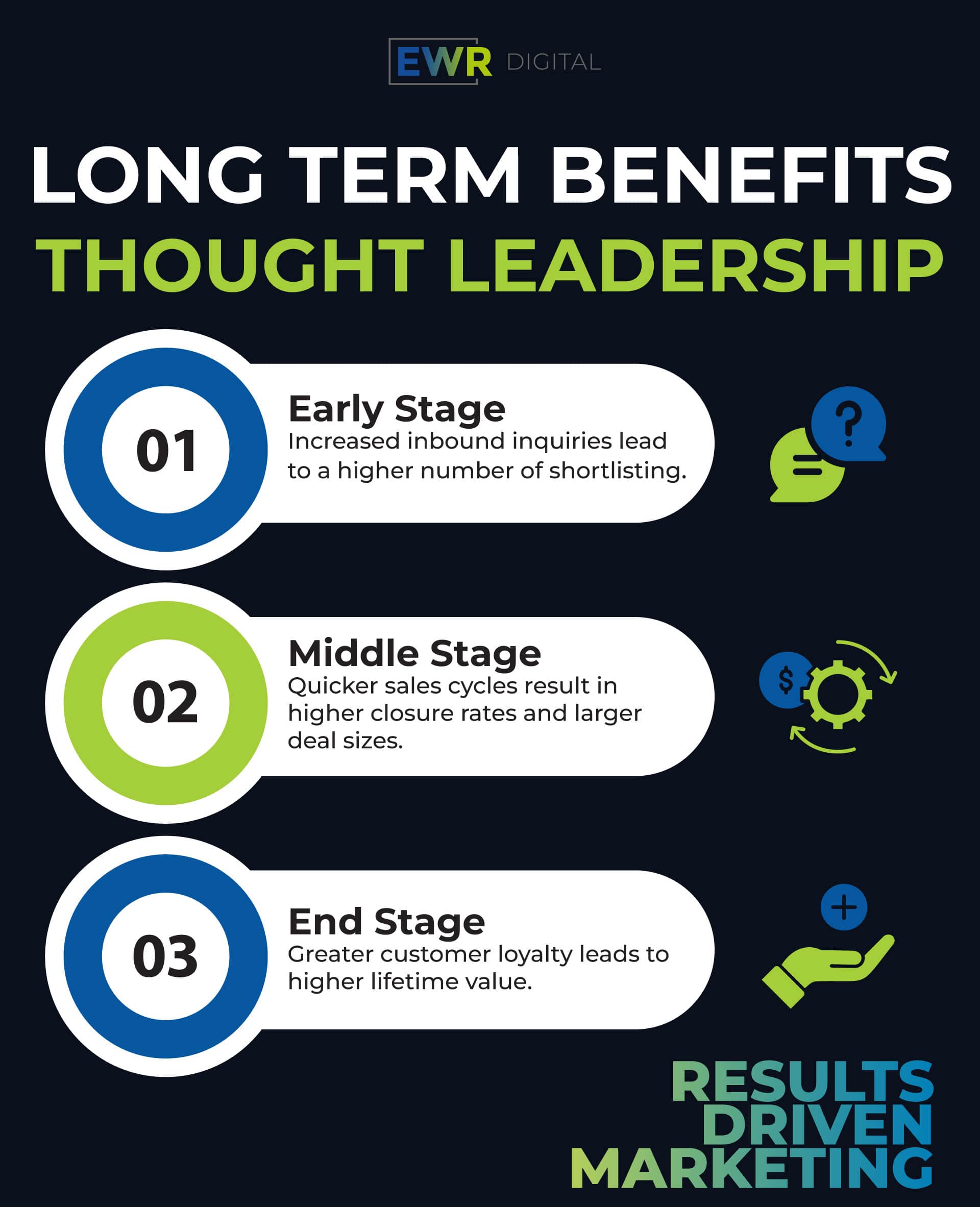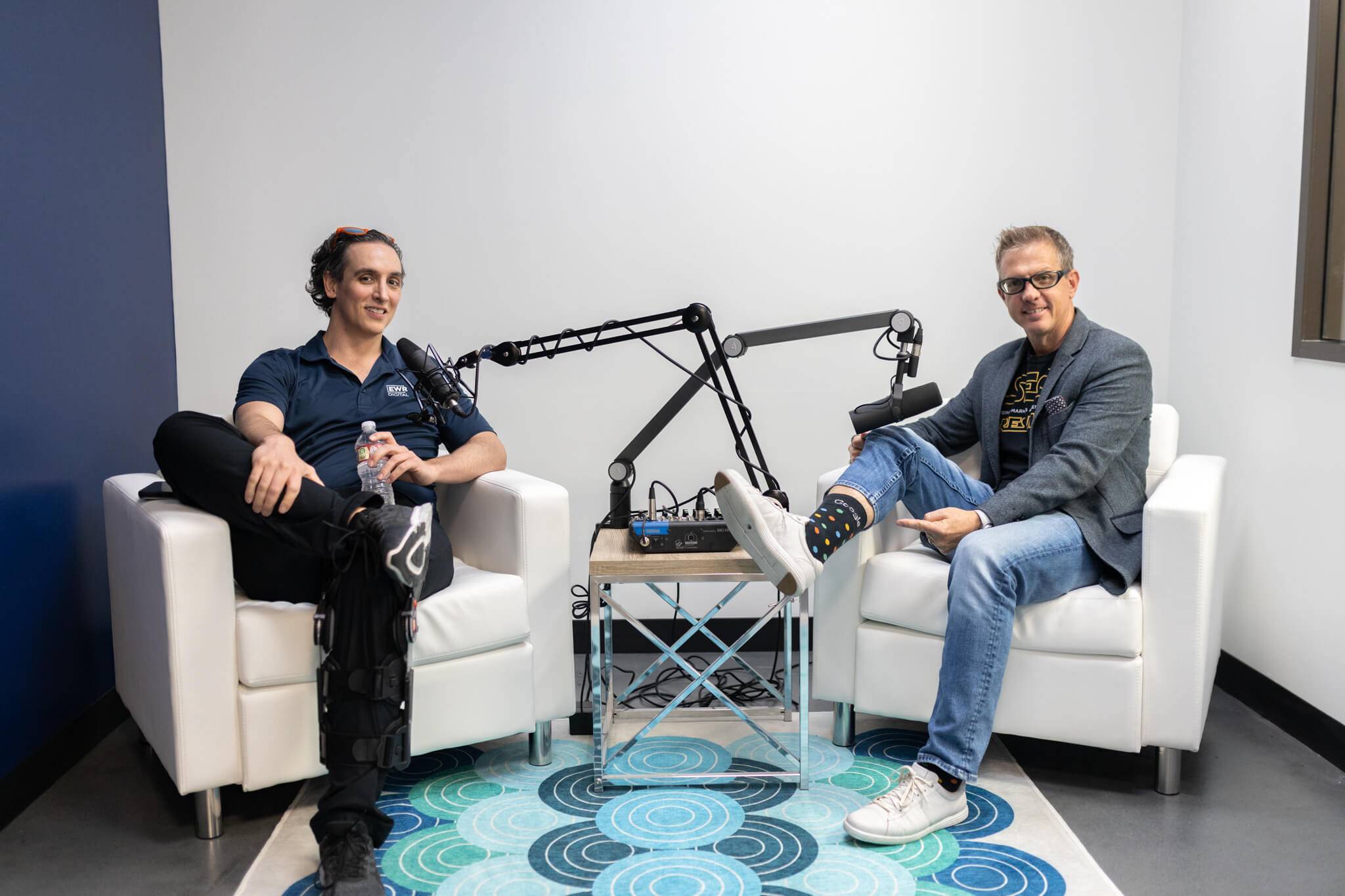
THE ENGAGING POTENTIAL OF PODCASTING
Let’s talk about you becoming a magnet for the “people” you want to attract into your business— we’re talking about clients, customers, peers, employees, affiliates, and followers. Having a podcast allows you to build a crowd of dedicated followers, expand your reach, and grow consistent revenue in your organization.
PODCASTING AND THOUGHT LEADERSHIP
Think back for a moment how ridiculous it was to only have live television available to you. If you did not tune in to the exact TV station at just the right time, you would not be able to watch your show. Likewise, if you had a favorite radio show (perhaps a morning show or talk show) and you forgot to tune in at just the right time, it would be gone forever. We live in a more evolved world where content is “on demand”— so anyone can listen at any time— but the rules have changed. Anyone (especially you) can create a podcast, but it’s up to you to rise above the competition, remain consistent, and constantly promote your show, so that it is worthwhile for your business.
When you think about podcasting, what comes to mind? Some decision makers don’t give podcasting the attention it deserves– they think it’s silly (imagining podcasts that recap TV shows), they think it involves a huge time commitment (in hours per week but also the commitment to recording every week), expensive (complex) equipment and editing. These naysayers worry they’ll run out of content ideas or will repeat themselves. In other words, while many other businesses are enjoying all the benefits of podcasting, “they” have a problem for every solution!

A PRACTICAL PODCASTING PLAN
Although there are no rules with podcasting, and every show is different, allow me to propose this podcast as the ideal fit for your business:
- You publish a 30-minute podcast episode every week, interviewing a past, present, or future client of your company — or a “referral source.”
- Ask your podcast guest about their uniqueness, focus, and passion. What have they created in your industry that listeners should notice? What specific problem do they solve better than anyone else? Make the focus about your guest. Get their contact details near the end of your recording.
- Publish this video chat (in-person or split-screen remote) onto your website, YouTube, plus in audio-only form onto dozens of podcast networks like Apple Podcasts, Google Podcast, Spotify, Audible, and iHeartRadio.
- Slice and dice the podcast recording into 58-second and 4-minute video reels containing the best 5-10 moments. Create audiograms, quote graphics, image carousels, and tweets from the episode. Feed the episode’s transcript into ChatGPT to develop a detailed blog post, press release, podcast SEO show notes, a promotional email, and even a snippet to use for a round-up post later.
- Promote that podcast episode via email blast, Facebook, LinkedIn, X, Instagram, and anywhere else that makes sense — for example, a popular industry-specific Facebook or LinkedIn group. Tag your podcast guest on these social platforms and include a well-thought out description on each post.
- Follow up with your podcast guest just before “their” episode goes live, as well as regularly, perhaps once per quarter, asking them to promote a specific “destination” (a link in the wild) of their podcast episode — for example, provide swipe copy for that guest to publicize their interview with you as it appears on YouTube, or on Audible.
- Track the “best” content (full episodes and social clips) that deliver the most value and get the most engagement. Promote those podcast episodes as part of your evergreen sequence. Re-use those clips for your ads. Further develop the ideas from those episodes as part of your website’s pillar content.
PODCASTING BENEFITS
EWR Digital works with a lot of brands who know they should be doing more to self-promote. They are worried about being out-marketed by the competition, missing out on time-sensitive opportunities, not tapping into current trends or being ineffective with their emotional messaging.
With podcasting, quantity leads to quality. When you podcast consistently, you have unlimited social content— meaning you have lots of data (analytics) to look at on your social platforms and on your website. You don’t have to guess— you can see what content excites your audience, and what to create more of. Every business is looking for video testimonials from happy clients, new audiences and awareness. Podcasting can make all that possible!
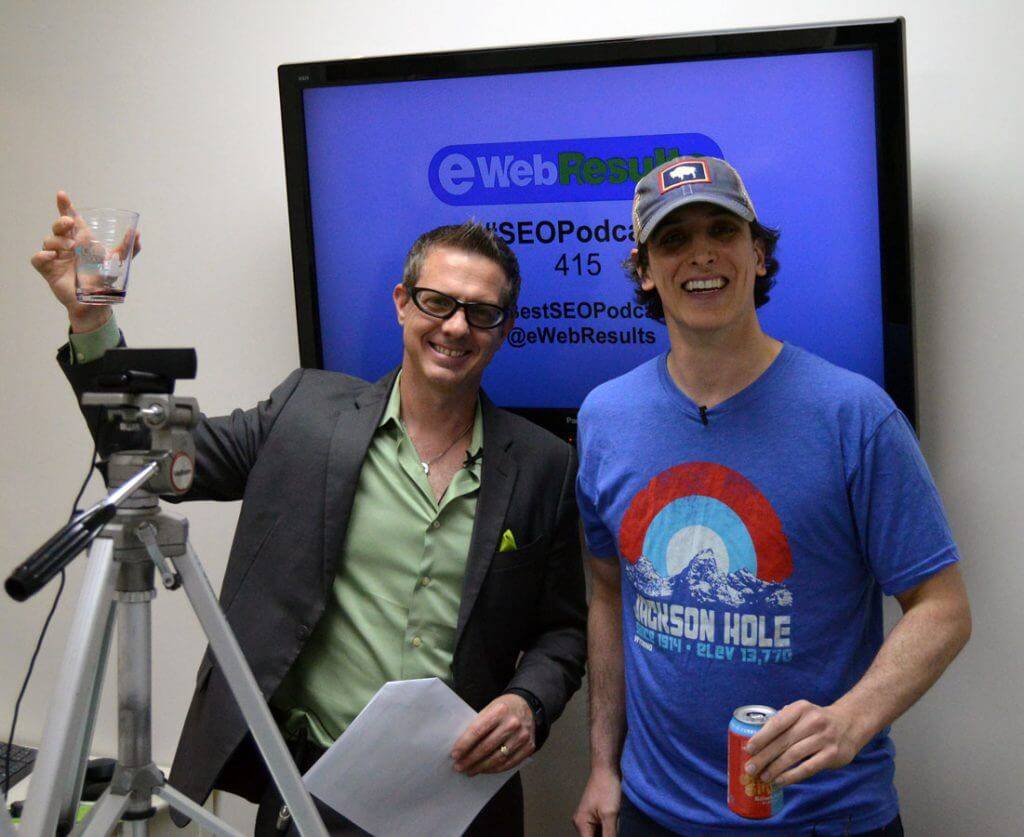
What Podcasting Does
- Building a Personal Connection: Podcasting enables thought leaders to establish a personal connection with their audience. The intimate nature of hearing someone’s voice fosters a sense of familiarity and connection, creating a bond that transcends traditional content formats. Listeners feel like they are part of a conversation, forging a more meaningful relationship with the thought leader.
- Showcasing Diverse Perspectives: Thought leaders can use podcasting as a platform to feature diverse voices and perspectives within their industry. Hosting interviews, panel discussions, or inviting guest experts allows for a rich tapestry of insights. This diversity not only enriches the content but also positions the thought leader as someone who values and promotes a broad spectrum of expertise.
- Audience Engagement Through Feedback: Podcasting encourages audience engagement through feedback and listener participation. Thought leaders can invite listeners to submit questions, share their thoughts, and even participate in live discussions. This interactive element not only strengthens the connection between the thought leader and their audience but also provides valuable insights into the topics that resonate most with listeners.

Did You Know
4.1 million podcasts exist, 150 million Americans listen to podcasts, and Americans listen to podcasts 54 minutes per day. Anyone can listen to your podcast, yet they can closely relate to the conversations you have with your guests. You can explore highly specific topics about your business and your industry. Your listeners might play your podcast in the background, while commuting, exercising, or cooking— times they otherwise might not tune into you and your message.
Why podcasting, instead of a blog or YouTube channel? You don’t have to choose one or the other. In fact, we highly recommend you pursue any form of content and traffic that you can handle— and podcasting can be the center of it. Many people think podcasting as “audio only” but since video camera and equipment, streaming, bandwidth, and storage is a lot more affordable and accessible, you should strongly consider recording video interviews and using them for your podcast, but also for YouTube videos, live streaming, refine your ideas into written blog posts and social posts— getting as much reach for your content as you can.
CONTENT: PODCAST PROMOTION USING AI AND CHATGPT
Many companies we speak to are excited but also confused about generative AI, specifically ChatGPT and how it can help their business. Theoretically, you could ask ChatGPT to write articles, blog posts, social media content, and video scripts to speak to your exact ideal customer and deliver your exact message. However, if you’ve tried to use ChatGPT to write for you, you’ve probably been disappointed. What’s the solution?
ChatGPT is good at guessing, so if you want it to create valuable content for your audience, you have to give it many opportunities to guess correctly. Many people only give ChatGPT a 30 word prompt and expect it to create a 300 word blog post. However, you should be going in the opposite direction — give it 3000 words (a transcript from your podcast interview, perhaps) and ask it to reduce the best information down to 300 words.

CHATGPT PODCASTING USE CASES
Ask ChatGPT to play the role of SEO expert and generate possible blog post titles for your content, that you (as a human) further refine. Use generative AI to create helpful show notes for that podcast episode, so a listener can jump to specific helpful moments. Feed your podcast transcript into ChatGPT to create a blog post outline, that you then fill in and iterate on over time.
You can ask generative AI to map out a flowchart or infographic (text-based) that you can use as a starting point to manually re-create (and improve) in a tool like Canva or LucidChart. You could create a lead quiz, LinkedIn post, or promotional email to use to get attention on your podcast episode. You see, the key with tools like ChatGPT is to “compress” (find the diamond in the rough) instead of “expand” (try to create something out of thin air)!
Far too many businesses are so concerned with content creation (podcast recording) that their marketing team doesn’t spend enough time on promoting that content (repurposing and repeating to other platforms and audiences).
Consider the problems your organization solves. Then think about the people (usually customers) who you want to notice you. What keyphrases are they searching and where do they hang out? Every podcast episode you create (or are a guest on) is an opportunity to rank for many search phrases, in many forms (social posts, blog posts, and podcast syndication on different platforms).
Veed is a helpful tool to create audiograms and Opus is useful to find bite-sized vital video clips from your podcast video recordings using AI.
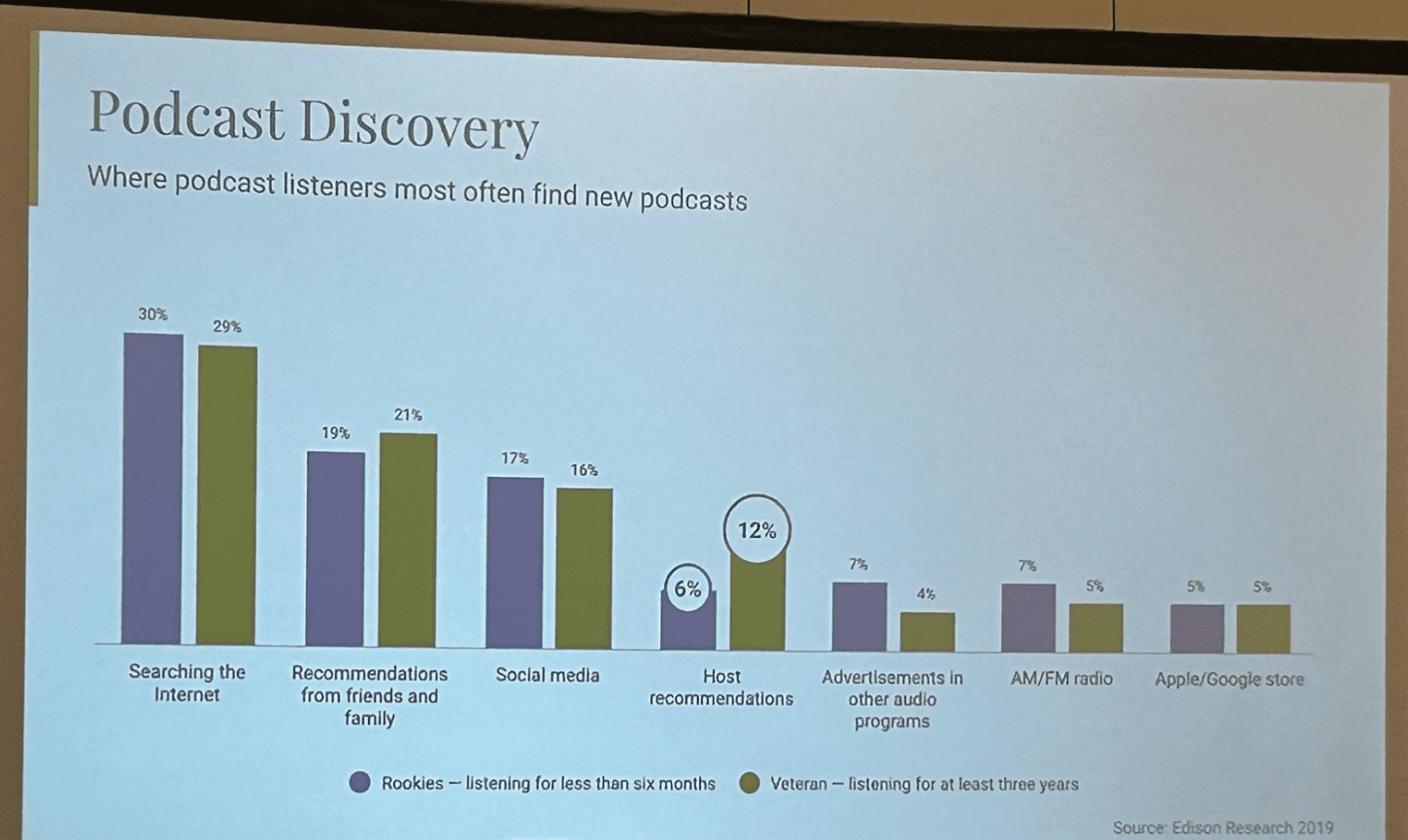
PODCASTING GROWTH STRATEGIES FOR BRAND INFLUENCE
“Given the competitive podcast landscape and the need to innovate and diversify content, what strategies would you recommend for a podcast host like me to enhance personal connections, feature diverse voices, and increase interactive engagement with listeners?”
Podcasting needs to be an embedded aspect of your business and something you grow into over time. As a thought leader or otherwise relevant company with an important message, podcasting is your opportunity to create a connection that transcends other forms of communication you are already using, like email marketing and social media marketing.
Having a Strategic Impact
- Building Trust and Credibility: The spoken word has a profound impact on building trust and credibility. Through podcasting, thought leaders can convey authenticity, transparency, and expertise in a way that resonates with the audience. Consistent, high-quality content delivered through this medium reinforces the trust that listeners place in the thought leader and their brand.
- Positioning as an Industry Authority: Podcasting positions thought leaders as industry authorities by showcasing their knowledge, insights, and thought processes. As audiences consistently tune in for valuable content, the thought leader becomes synonymous with expertise in their field. This positioning not only elevates the individual’s reputation but also contributes to the overall authority of the brand.
- Leveraging Cross-Channel Promotion: Podcasting integrates seamlessly into cross-channel promotion strategies. Thought leaders can leverage snippets, highlights, or key takeaways from podcast episodes to promote their content across various digital platforms. This multifaceted approach ensures that the influence generated through podcasting extends beyond the audio realm and reaches a broader audience.
PODCAST CASE STUDIES
For example, the Tim Ferriss Show has over one billion downloads, and it simply consists of many long-form conversations (interviews) over 700+ episodes. When Tim launched the podcast, he sent traffic to a potential podcast guest questionnaire form, seeking people whose lives (and businesses) were improved by his Four Hour Workweek book. Notice how Tim didn’t go to work planning “monologue” episodes about productivity — he sought out a very wide variety of guests.
This is a very key unspoken concept in podcasting — put a lot of thought into your “who” (what guest experts you will feature, what audience you will help) and less about keywords, ideas, and concepts. Don’t be concerned with staying on-brand 100% of the time throughout every episode. Instead, ask interesting questions from your podcast guest (ideally, ones they aren’t normally asked) to have an authentic conversation and deliver helpful advice.
Another podcast that I enjoy is Marketing School by Neil Patel and Eric Siu. It is a daily 20-minute podcast with over 2700 episodes. Because there are two co-hosts instead of a single speaker, they can speak out witty banter and express different viewpoints. Their formats include a mix of guest interviews — sometimes authors and other podcasts hosts. They might discuss McDonald’s, Tesla, Instagram, Mr. Beast, ConvertKit, Pat Flynn— a mix of specific industry-related news, more globally accessible news, and personal news about what they’re working on in their own business.
You should also check out 2 of my top rated podcasts if you enjoy marketing and sales content:

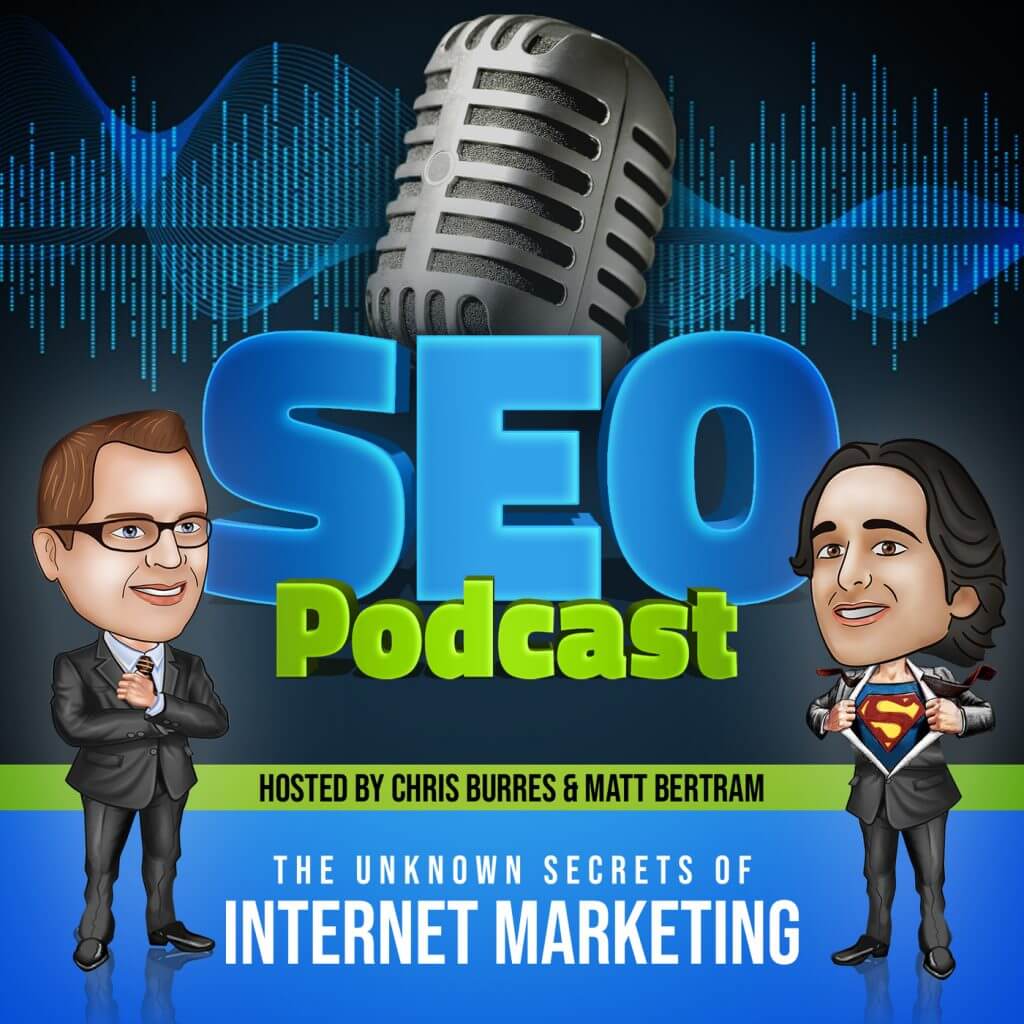
A thought leader such as yourself can use podcasting as a platform to feature diverse voices and perspectives within your industry. This makes your content “sustainable”— you can reliably create helpful episodes, while positioning you as someone who values and promotes a broad spectrum of expertise.
Podcasting encourages your audience to engage with you through feedback and listener participation. You can invite listeners to submit questions, share their thoughts, and even participate in live discussions. This strengthens the connection between you and your audience, while also providing valuable insights into the topics that help your listeners, and those they enjoy the most!
TRUST, CREDIBILITY, AND NETWORKING
Podcasting is your ideal tool to build trust and credibility. Use it to regularly deliver high-quality content— enhancing the trust in your brand and company, and cementing your reputation as an industry authority.
Podcasting offers you many opportunities to amplify your brand’s presence through cross-channel promotion— repurpose snippets, highlights, and key takeaways from your episodes across your digital platforms, extending the reach and influence of your content well beyond its original audio format.
Podcasting is your vehicle to maintain audience engagement and attract new listeners, while you remain relevant and influential within your industry. It’s a powerful medium for you, as a thought leader, to amplify your influence. You can initiate dynamic conversations that extend well beyond the episode, leaving a lasting impact on your industry’s narrative. Capture your audience’s attention and solidify your status as an influential figure!

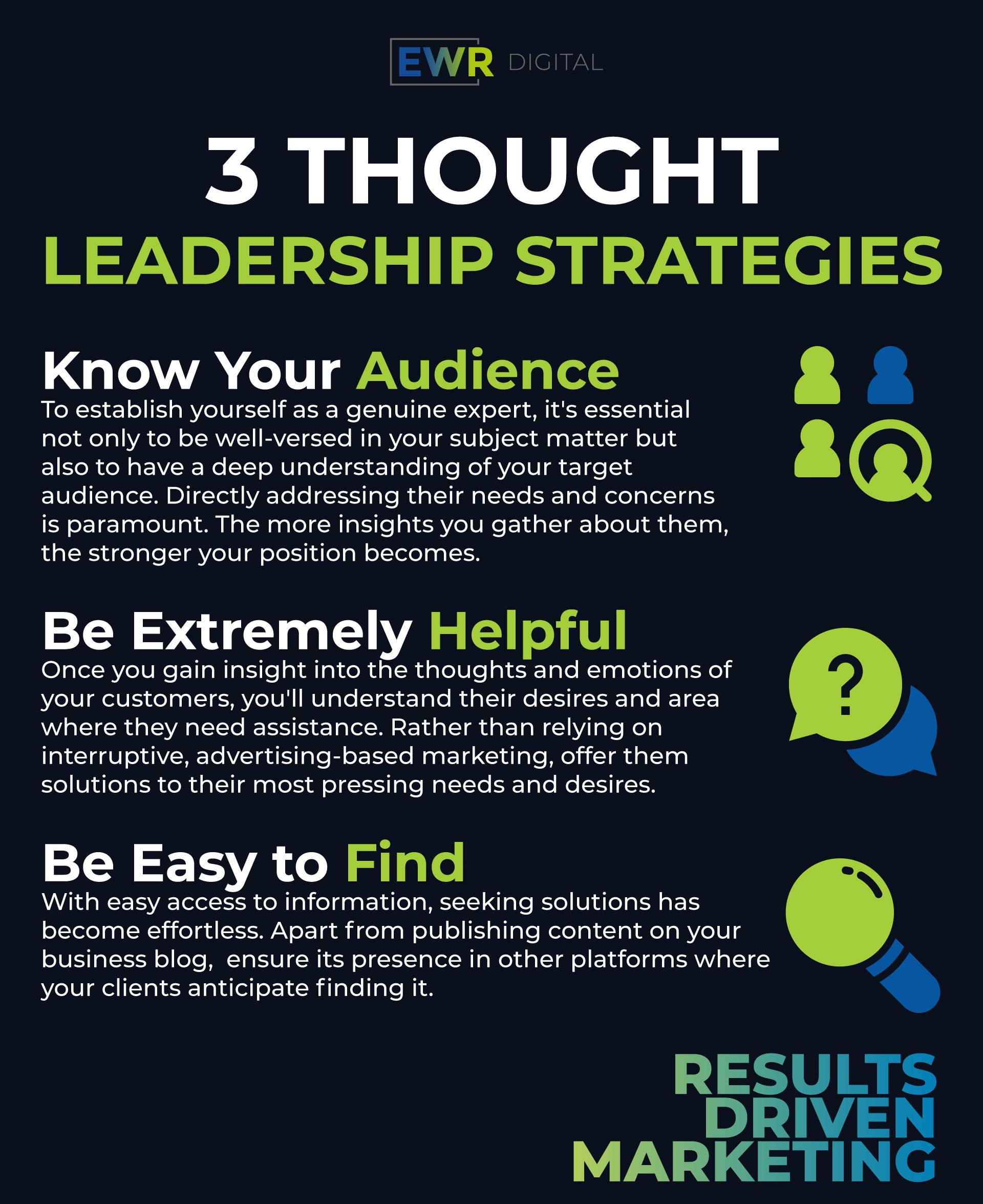
Final Thoughts
Amplifying Influence Through Podcasting In the symphony of digital content, podcasting emerges as a distinct and influential instrument for thought leaders. Its ability to convey authenticity, foster connection, and engage audiences on a deeper level positions podcasting as a catalyst for thought leadership. Thought leaders who harness the power of podcasting are not just disseminating information; they are orchestrating a dynamic conversation that amplifies their influence and shapes the future of their industry.
As we navigate the future landscape of digital communication, podcasting stands as a testament to the enduring power of spoken words. Thought leaders who embrace this medium are not only capturing the attention of their audience but also leaving an indelible imprint on the evolving narrative of their industry. So, let your voice be heard in the digital symphony, and watch as your influence resonates far beyond the confines of the written word.
